1.AOP的简介
1.1 什么是AOP?
- AOP(Aspect Oriented Programming)面向切面编程,一种编程范式,指导开发者如何组织程序结构。
- OOP(Object Oriented Programming)面向对象编程
我们都知道OOP是一种编程思想,那么AOP也是一种编程思想,编程思想主要的内容就是指导程序员该如何编写程序,所以它们两个是不同的编程范式。
1.2 AOP作用
- 作用:在不惊动原始设计的基础上为其进行功能增强,前面咱们有技术就可以实现这样的功能即代理模式。
前面咱们有技术就可以实现这样的功能即代理模式。
- 简而言之 AOP就是在触发一个方法的同时 可以在此方法触发前或者触发后运行其他的方法 多数使用环绕通知,即围绕触发方法运行。
2.AOP的使用
2.1使用步骤
步骤1:添加依赖
pom.xml
<dependency>
<groupId>org.aspectj</groupId>
<artifactId>aspectjweaver</artifactId>
<version>1.9.4</version>
</dependency>
![[外链图片转存失败,源站可能有防盗链机制,建议将图片保存下来直接上传(img-mSYObAxz-1677416538545)(assets/1630146885493.png)]](https://img-blog.csdnimg.cn/6b148e87ed6f449e892491231dd7febb.png)
- 因为
spring-context中已经导入了spring-aop,所以不需要再单独导入spring-aop - 导入AspectJ的jar包,AspectJ是AOP思想的一个具体实现,Spring有自己的AOP实现,但是相比于AspectJ来说比较麻烦,所以我们直接采用Spring整合ApsectJ的方式进行AOP开发。
步骤2:定义接口与实现类
环境准备的时候,BookDaoImpl已经准备好,不需要做任何修改
步骤3:定义通知类和通知
通知就是将共性功能抽取出来后形成的方法,共性功能指的就是当前系统时间的打印。
public class MyAdvice {
public void method(){
System.out.println(System.currentTimeMillis());
}
}
类名和方法名没有要求,可以任意。
步骤4:定义切入点
BookDaoImpl中有两个方法,分别是save和update,我们要增强的是update方法,该如何定义呢?
public class MyAdvice {
@Pointcut("execution(void com.itheima.dao.BookDao.update())")
private void pt(){}
public void method(){
System.out.println(System.currentTimeMillis());
}
}
说明:
- 切入点定义依托一个不具有实际意义的方法进行,即无参数、无返回值、方法体无实际逻辑。
- execution及后面编写的内容,后面会有章节专门去学习。
步骤5:制作切面
切面是用来描述通知和切入点之间的关系,如何进行关系的绑定?
public class MyAdvice {
@Pointcut("execution(void com.itheima.dao.BookDao.update())")
private void pt(){}
@Before("pt()")
public void method(){
System.out.println(System.currentTimeMillis());
}
}
绑定切入点与通知关系,并指定通知添加到原始连接点的具体执行位置
![[外链图片转存失败,源站可能有防盗链机制,建议将图片保存下来直接上传(img-Ky3AhsSX-1677416538546)(assets/1630148447689.png)]](https://img-blog.csdnimg.cn/e62e5f12e2dd4cd487ea5da7de350b46.png)
说明:@Before翻译过来是之前,也就是说通知会在切入点方法执行之前执行,除此之前还有其他四种类型,后面会讲。
步骤6:将通知类配给容器并标识其为切面类
@Component
@Aspect
public class MyAdvice {
@Pointcut("execution(void com.itheima.dao.BookDao.update())")
private void pt(){}
@Before("pt()")
public void method(){
System.out.println(System.currentTimeMillis());
}
}
步骤7:开启注解格式AOP功能
@Configuration
@ComponentScan("com.itheima")
@EnableAspectJAutoProxy
public class SpringConfig {
}
步骤8:运行程序
public class App {
public static void main(String[] args) {
ApplicationContext ctx = new AnnotationConfigApplicationContext(SpringConfig.class);
BookDao bookDao = ctx.getBean(BookDao.class);
bookDao.update();
}
}
看到在执行update方法之前打印了系统时间戳,说明对原始方法进行了增强,AOP编程成功。
![[外链图片转存失败,源站可能有防盗链机制,建议将图片保存下来直接上传(img-IPV2xMJD-1677416538546)(assets/1630147945888.png)]](https://img-blog.csdnimg.cn/4375b5c5b46b4f6c903198260a2f3d21.png)
知识点1:@EnableAspectJAutoProxy
| 名称 | @EnableAspectJAutoProxy |
|---|---|
| 类型 | 配置类注解 |
| 位置 | 配置类定义上方 |
| 作用 | 开启注解格式AOP功能 |
知识点2:@Aspect
| 名称 | @Aspect |
|---|---|
| 类型 | 类注解 |
| 位置 | 切面类定义上方 |
| 作用 | 设置当前类为AOP切面类 |
知识点3:@Pointcut
| 名称 | @Pointcut |
|---|---|
| 类型 | 方法注解 |
| 位置 | 切入点方法定义上方 |
| 作用 | 设置切入点方法 |
| 属性 | value(默认):切入点表达式 |
知识点4:@Before
| 名称 | @Before |
|---|---|
| 类型 | 方法注解 |
| 位置 | 通知方法定义上方 |
| 作用 | 设置当前通知方法与切入点之间的绑定关系,当前通知方法在原始切入点方法前运行 |
3实战举例(2)
3.1 实战一:业务层接口执行效率
3.1.1 需求分析
这个需求也比较简单,前面我们在介绍AOP的时候已经演示过:
- 需求:任意业务层接口执行均可显示其执行效率(执行时长)
这个案例的目的是查看每个业务层执行的时间,这样就可以监控出哪个业务比较耗时,将其查找出来方便优化。
具体实现的思路:
(1) 开始执行方法之前记录一个时间
(2) 执行方法
(3) 执行完方法之后记录一个时间
(4) 用后一个时间减去前一个时间的差值,就是我们需要的结果。
所以要在方法执行的前后添加业务,经过分析我们将采用环绕通知。
**说明:**原始方法如果只执行一次,时间太快,两个时间差可能为0,所以我们要执行万次来计算时间差。
3.1.2 环境准备
-
创建一个Maven项目
-
pom.xml添加Spring依赖
<dependencies> <dependency> <groupId>org.springframework</groupId> <artifactId>spring-context</artifactId> <version>5.2.10.RELEASE</version> </dependency> <dependency> <groupId>org.springframework</groupId> <artifactId>spring-jdbc</artifactId> <version>5.2.10.RELEASE</version> </dependency> <dependency> <groupId>org.springframework</groupId> <artifactId>spring-test</artifactId> <version>5.2.10.RELEASE</version> </dependency> <dependency> <groupId>org.aspectj</groupId> <artifactId>aspectjweaver</artifactId> <version>1.9.4</version> </dependency> <dependency> <groupId>mysql</groupId> <artifactId>mysql-connector-java</artifactId> <version>5.1.47</version> </dependency> <dependency> <groupId>com.alibaba</groupId> <artifactId>druid</artifactId> <version>1.1.16</version> </dependency> <dependency> <groupId>org.mybatis</groupId> <artifactId>mybatis</artifactId> <version>3.5.6</version> </dependency> <dependency> <groupId>org.mybatis</groupId> <artifactId>mybatis-spring</artifactId> <version>1.3.0</version> </dependency> <dependency> <groupId>junit</groupId> <artifactId>junit</artifactId> <version>4.12</version> <scope>test</scope> </dependency> </dependencies> -
添加AccountService、AccountServiceImpl、AccountDao与Account类
public interface AccountService { void save(Account account); void delete(Integer id); void update(Account account); List<Account> findAll(); Account findById(Integer id); } @Service public class AccountServiceImpl implements AccountService { @Autowired private AccountDao accountDao; public void save(Account account) { accountDao.save(account); } public void update(Account account){ accountDao.update(account); } public void delete(Integer id) { accountDao.delete(id); } public Account findById(Integer id) { return accountDao.findById(id); } public List<Account> findAll() { return accountDao.findAll(); } } public interface AccountDao { @Insert("insert into tbl_account(name,money)values(#{name},#{money})") void save(Account account); @Delete("delete from tbl_account where id = #{id} ") void delete(Integer id); @Update("update tbl_account set name = #{name} , money = #{money} where id = #{id} ") void update(Account account); @Select("select * from tbl_account") List<Account> findAll(); @Select("select * from tbl_account where id = #{id} ") Account findById(Integer id); } public class Account implements Serializable { private Integer id; private String name; private Double money; //setter..getter..toString方法省略 } -
resources下提供一个jdbc.properties
jdbc.driver=com.mysql.jdbc.Driver jdbc.url=jdbc:mysql://localhost:3306/spring_db?useSSL=false jdbc.username=root jdbc.password=root -
创建相关配置类
//Spring配置类:SpringConfig @Configuration @ComponentScan("com.itheima") @PropertySource("classpath:jdbc.properties") @Import({JdbcConfig.class,MybatisConfig.class}) public class SpringConfig { } //JdbcConfig配置类 public class JdbcConfig { @Value("${jdbc.driver}") private String driver; @Value("${jdbc.url}") private String url; @Value("${jdbc.username}") private String userName; @Value("${jdbc.password}") private String password; @Bean public DataSource dataSource(){ DruidDataSource ds = new DruidDataSource(); ds.setDriverClassName(driver); ds.setUrl(url); ds.setUsername(userName); ds.setPassword(password); return ds; } } //MybatisConfig配置类 public class MybatisConfig { @Bean public SqlSessionFactoryBean sqlSessionFactory(DataSource dataSource){ SqlSessionFactoryBean ssfb = new SqlSessionFactoryBean(); ssfb.setTypeAliasesPackage("com.itheima.domain"); ssfb.setDataSource(dataSource); return ssfb; } @Bean public MapperScannerConfigurer mapperScannerConfigurer(){ MapperScannerConfigurer msc = new MapperScannerConfigurer(); msc.setBasePackage("com.itheima.dao"); return msc; } } -
编写Spring整合Junit的测试类
@RunWith(SpringJUnit4ClassRunner.class) @ContextConfiguration(classes = SpringConfig.class) public class AccountServiceTestCase { @Autowired private AccountService accountService; @Test public void testFindById(){ Account ac = accountService.findById(2); } @Test public void testFindAll(){ List<Account> all = accountService.findAll(); } }
最终创建好的项目结构如下:
![[外链图片转存失败,源站可能有防盗链机制,建议将图片保存下来直接上传(img-WfWCsAat-1677416831895)(assets/1630214631112.png)]](https://img-blog.csdnimg.cn/f79d5c259b1e48a78d87d0caf27a39ff.png)
3.1.3 功能开发
步骤1:开启SpringAOP的注解功能
在Spring的主配置文件SpringConfig类中添加注解
@EnableAspectJAutoProxy
步骤2:创建AOP的通知类
-
该类要被Spring管理,需要添加@Component
-
要标识该类是一个AOP的切面类,需要添加@Aspect
-
配置切入点表达式,需要添加一个方法,并添加@Pointcut
@Component
@Aspect
public class ProjectAdvice {
//配置业务层的所有方法
@Pointcut("execution(* com.itheima.service.*Service.*(..))")
private void servicePt(){}
public void runSpeed(){
}
}
步骤3:添加环绕通知
在runSpeed()方法上添加@Around
@Component
@Aspect
public class ProjectAdvice {
//配置业务层的所有方法
@Pointcut("execution(* com.itheima.service.*Service.*(..))")
private void servicePt(){}
//@Around("ProjectAdvice.servicePt()") 可以简写为下面的方式
@Around("servicePt()")
public Object runSpeed(ProceedingJoinPoint pjp){
Object ret = pjp.proceed();
return ret;
}
}
**注意:**目前并没有做任何增强
步骤4:完成核心业务,记录万次执行的时间
@Component
@Aspect
public class ProjectAdvice {
//配置业务层的所有方法
@Pointcut("execution(* com.itheima.service.*Service.*(..))")
private void servicePt(){}
//@Around("ProjectAdvice.servicePt()") 可以简写为下面的方式
@Around("servicePt()")
public void runSpeed(ProceedingJoinPoint pjp){
long start = System.currentTimeMillis();
for (int i = 0; i < 10000; i++) {
pjp.proceed();
}
long end = System.currentTimeMillis();
System.out.println("业务层接口万次执行时间: "+(end-start)+"ms");
}
}
步骤5:运行单元测试类
![[外链图片转存失败,源站可能有防盗链机制,建议将图片保存下来直接上传(img-6Be4m6Cz-1677416831896)(assets/1630215355776.png)]](https://img-blog.csdnimg.cn/174f9dfccd7449ec9920b9c05dbd74f4.png)
**注意:**因为程序每次执行的时长是不一样的,所以运行多次最终的结果是不一样的。
步骤6:程序优化
目前程序所面临的问题是,多个方法一起执行测试的时候,控制台都打印的是:
业务层接口万次执行时间:xxxms
我们没有办法区分到底是哪个接口的哪个方法执行的具体时间,具体如何优化?
@Component
@Aspect
public class ProjectAdvice {
//配置业务层的所有方法
@Pointcut("execution(* com.itheima.service.*Service.*(..))")
private void servicePt(){}
//@Around("ProjectAdvice.servicePt()") 可以简写为下面的方式
@Around("servicePt()")
public void runSpeed(ProceedingJoinPoint pjp){
//获取执行签名信息
Signature signature = pjp.getSignature();
//通过签名获取执行操作名称(接口名)
String className = signature.getDeclaringTypeName();
//通过签名获取执行操作名称(方法名)
String methodName = signature.getName();
long start = System.currentTimeMillis();
for (int i = 0; i < 10000; i++) {
pjp.proceed();
}
long end = System.currentTimeMillis();
System.out.println("万次执行:"+ className+"."+methodName+"---->" +(end-start) + "ms");
}
}
步骤7:运行单元测试类
![[外链图片转存失败,源站可能有防盗链机制,建议将图片保存下来直接上传(img-nQ2ixzaG-1677416831896)(assets/1630215743444.png)]](https://img-blog.csdnimg.cn/f1edb79a48314559b81210130eb94bb9.png)
补充说明
当前测试的接口执行效率仅仅是一个理论值,并不是一次完整的执行过程。
这块只是通过该案例把AOP的使用进行了学习,具体的实际值是有很多因素共同决定的。
3.2 实现二:百度网盘密码数据兼容处理
3.2.1需求分析
- 当我们在百度网盘链接输入密码的时候 有时候可能会复制到前后的空格 这时候就会显示密码错误 而这时我们需要使用环绕通知的功能在所复制的密码前后自动除去空格时期配对成功
3.2.2 环境准备
-
创建一个Maven项目
-
pom.xml添加Spring依赖
<dependencies> <dependency> <groupId>org.springframework</groupId> <artifactId>spring-context</artifactId> <version>5.2.10.RELEASE</version> </dependency> <dependency> <groupId>org.aspectj</groupId> <artifactId>aspectjweaver</artifactId> <version>1.9.4</version> </dependency> </dependencies> -
添加ResourcesService,ResourcesServiceImpl,ResourcesDao和ResourcesDaoImpl类
public interface ResourcesDao { boolean readResources(String url, String password); } @Repository public class ResourcesDaoImpl implements ResourcesDao { public boolean readResources(String url, String password) { //模拟校验 return password.equals("root"); } } public interface ResourcesService { public boolean openURL(String url ,String password); } @Service public class ResourcesServiceImpl implements ResourcesService { @Autowired private ResourcesDao resourcesDao; public boolean openURL(String url, String password) { return resourcesDao.readResources(url,password); } } -
创建Spring的配置类
@Configuration @ComponentScan("com.itheima") public class SpringConfig { } -
编写App运行类
public class App { public static void main(String[] args) { ApplicationContext ctx = new AnnotationConfigApplicationContext(SpringConfig.class); ResourcesService resourcesService = ctx.getBean(ResourcesService.class); boolean flag = resourcesService.openURL("http://pan.baidu.com/haha", "root"); System.out.println(flag); } }
最终创建好的项目结构如下:
![[外链图片转存失败,源站可能有防盗链机制,建议将图片保存下来直接上传(img-ZMqVNyJF-1677417246834)(assets/1630241681697.png)]](https://img-blog.csdnimg.cn/fa78ad0a92b64d2791f38f9df676d2fa.png)
现在项目的效果是,当输入密码为"root"控制台打印为true,如果密码改为"root "控制台打印的是false
需求是使用AOP将参数进行统一处理,不管输入的密码root前后包含多少个空格,最终控制台打印的都是true。
3.2.3 具体实现
步骤1:开启SpringAOP的注解功能
@Configuration
@ComponentScan("com.itheima")
@EnableAspectJAutoProxy
public class SpringConfig {
}
步骤2:编写通知类
@Component
@Aspect
public class DataAdvice {
@Pointcut("execution(boolean com.itheima.service.*Service.*(*,*))")
private void servicePt(){}
}
步骤3:添加环绕通知
@Component
@Aspect
public class DataAdvice {
@Pointcut("execution(boolean com.itheima.service.*Service.*(*,*))")
private void servicePt(){}
@Around("DataAdvice.servicePt()")
// @Around("servicePt()")这两种写法都对
public Object trimStr(ProceedingJoinPoint pjp) throws Throwable {
Object ret = pjp.proceed();
return ret;
}
}
步骤4:完成核心业务,处理参数中的空格
@Component
@Aspect
public class DataAdvice {
@Pointcut("execution(boolean com.itheima.service.*Service.*(*,*))")
private void servicePt(){}
@Around("DataAdvice.servicePt()")
// @Around("servicePt()")这两种写法都对
public Object trimStr(ProceedingJoinPoint pjp) throws Throwable {
//获取原始方法的参数
Object[] args = pjp.getArgs();
for (int i = 0; i < args.length; i++) {
//判断参数是不是字符串
if(args[i].getClass().equals(String.class)){
args[i] = args[i].toString().trim();
}
}
//将修改后的参数传入到原始方法的执行中
Object ret = pjp.proceed(args);
return ret;
}
}
步骤5:运行程序
不管密码root前后是否加空格,最终控制台打印的都是true
步骤6:优化测试
为了能更好的看出AOP已经生效,我们可以修改ResourcesImpl类,在方法中将密码的长度进行打印
@Repository
public class ResourcesDaoImpl implements ResourcesDao {
public boolean readResources(String url, String password) {
System.out.println(password.length());
//模拟校验
return password.equals("root");
}
}
再次运行成功,就可以根据最终打印的长度来看看,字符串的空格有没有被去除掉。
注意:
![[外链图片转存失败,源站可能有防盗链机制,建议将图片保存下来直接上传(img-36zPPyFe-1677417246835)(assets/1630242491831.png)]](https://img-blog.csdnimg.cn/a70010e5ac484cb3930c5ab017e3ce13.png)




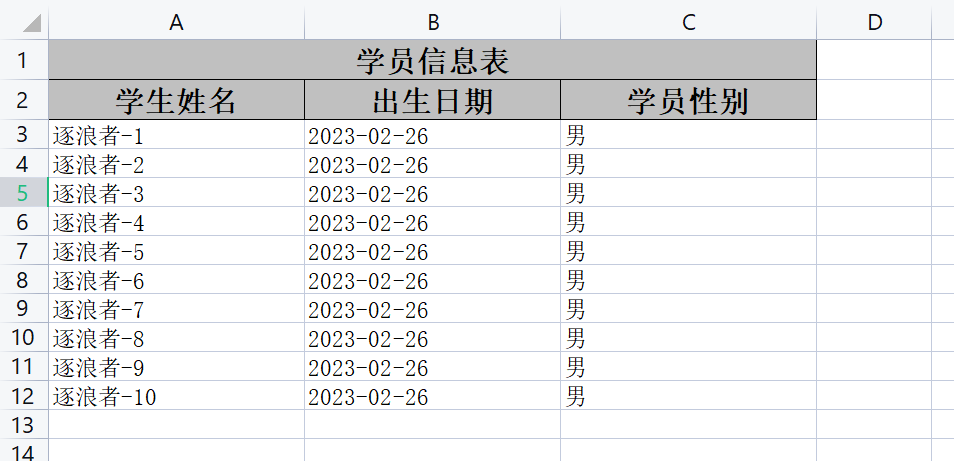

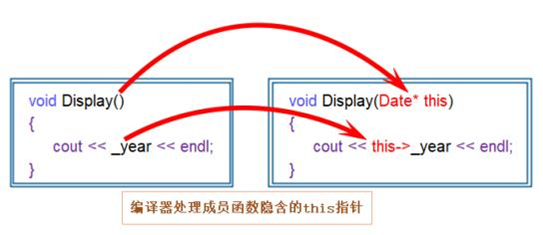






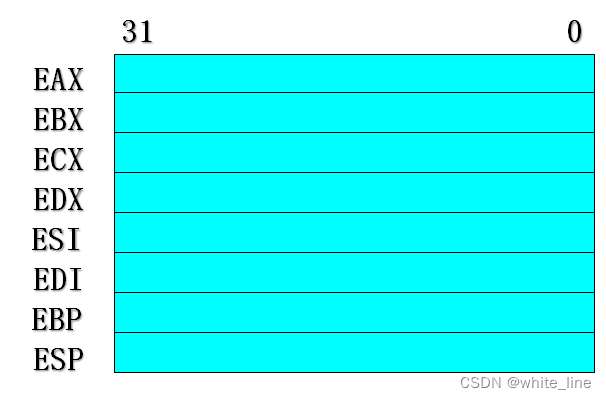
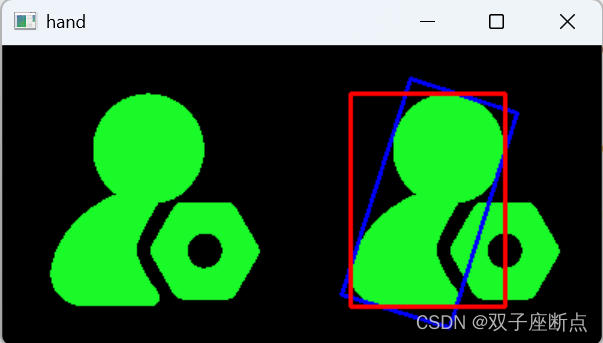
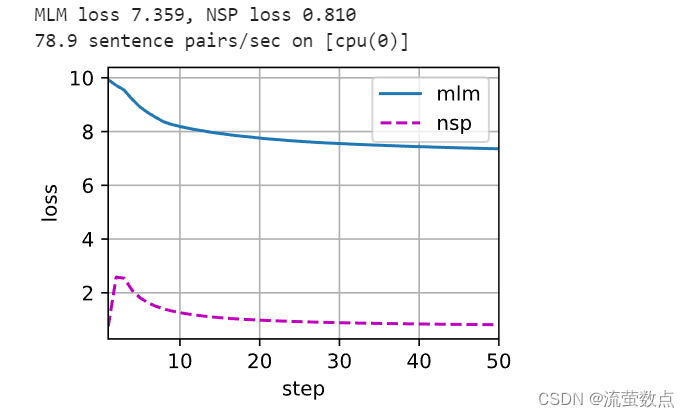


![[8]云计算概念、技术与架构Thomas Erl-第九章 云管理机制|week9|10月29日](https://img-blog.csdnimg.cn/fd98f8ef447c4066b6ec74ce55e8537a.png)
